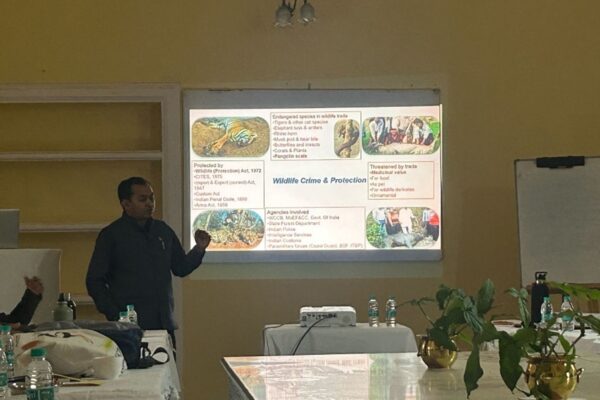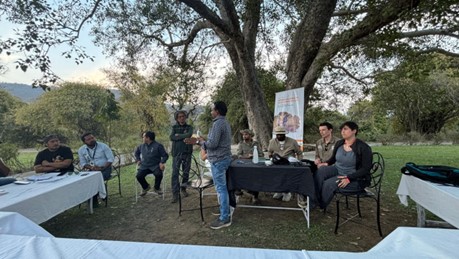
18th February
by Dr Adarsh A. M
The day began with the tranquil embrace of nature as we gathered under a sprawling tree for a rejuvenating yoga session. The rising sun painted the sky with hues of pink and orange, setting a serene tone for the day ahead. Little did we know that the day would unfold with revelations about the dark underbelly of wildlife crime.
Our first lecture, led by the knowledgeable Dr S K Gupta, delved into the riveting world of wildlife crime and forensics. The shocking statistics and methods of wildlife poaching left us in awe, realising the urgent need for conservation efforts. Dr Gupta’s insights into laboratory analysis and modern forensic diagnostic technology applications in solving wildlife crime cases were eye-opening.
Following this enlightening session, we transitioned to the great outdoors with Mr C P Sharma, an expert in identifying various wildlife species. The air was excited as he presented various trophies collected from wildlife crime cases. Armed with knowledge, we embarked on a journey to identify these trophies based on distinct morphological variations, a skill crucial for any wildlife crime investigator.
After a hearty lunch, our team prepared for a mock exercise on crime scene management, evidence collection, and overall investigation. I was in a group of six, each assuming different roles in our wildlife crime scenario. Our chosen case involved illegally shooting a leopard for wildlife product trading. With meticulous precision, our team secured supporting evidence – the shotgun, cartridge shell, and remnants. We marked the gunshot areas on a large tree, preserving the crime scene for further analysis. A detailed post-mortem report rounded out our investigative efforts.
As the sun dipped below the horizon, we engaged in a thorough cross-questioning discussion led by Mr C P Sharma. His insights highlighted the critical elements of crafting a comprehensive report. Our day unfolded like a real-life investigation, resembling something out of a crime-solving TV show. The commitment and enthusiasm within our team mirrored that of CID officers, determined to bring the culprits to justice and ensure they faced the consequences of their actions.
In conclusion, Day 9 of the IWAH course deepened our understanding of wildlife crime and forensics and allowed us to experience the thrill of investigating a crime scene firsthand. The journey towards becoming adept wildlife crime investigators continues, fuelled by passion, knowledge, and a shared commitment to protect our planet’s precious biodiversity.



